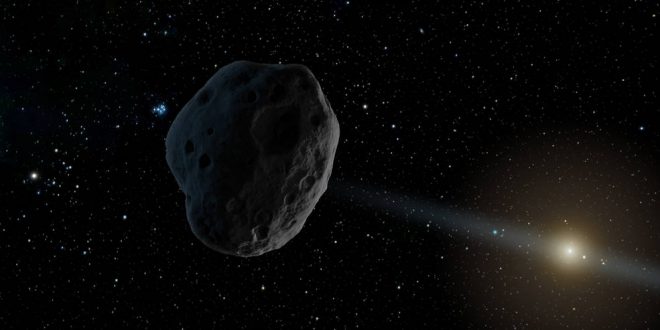According to NASA, a rare comet that researchers have discovered will be visible from earth.
According to a press release from the Jet Propulsion Laboratory, NASA actually has its eye on two newly discovered comets at the moment. But the one we care about at this exact moment is called Comet C/2016 U1 NEOWISE, and the reason we care is because of how fantastically near to us its orbit through our solar system is currently taking it.
Comet C/2016 U1 NEOWISE is expected to reach maximum brightness during the second week on January. Discovered by the Near-Earth Object Wide-field Infrared Survey Explorer (NEOWISE) space observatory on its extended mission on October 21st, 2016, Comet U1 NEOWISE orbits the Sun on an undefined hyperbolic orbit that is perhaps millions on years long. This also means that this could be Comet C/2016 U1 NEOWISE’s first venture through the inner solar system. Comet C/2016 U1 NEOWISE is set to break binocular +10th magnitude brightness this week, and may just top +6th magnitude (naked eye brightness) in mid-January near perihelion.
Visibility prospects: At its brightest, Comet C/2016 U1 NEOWISE will pass through the constellations Ophiuchus to Serpens Cauda and Sagittarius, and is best visible in the dawn sky 12 degrees from the Sun at maximum brightness. This apparition favors the northern hemisphere. Perihelion for Comet C/2016 U1 NEOWISE occurs on January 13th, 2017 at 0.319 AU from the Sun, and the comet passed 0.709 AU from the Earth on December 13th.
This is the ninth comet discovered by the extended NEOWISE mission since 2014.
Comet C/2016 U1 NEOWISE ends 2016 and early January 2017 as a difficult early dawn target, sitting 25 degrees above the eastern horizon as seen from latitude 30 degrees north about 30 minutes before dawn. Things will get much more difficult from there, as the comet passes just 12 degrees from the Sun as seen from our Earthly vantage point during the final week of January. The comet sits 16 degrees from the Sun in the southern hemisphere constellation of Microscopium on the final day of January, though it is expected to shine at only +10th magnitude at this point, favoring observers in the southern hemisphere.
The time to try to catch a brief sight of Comet C/2016 U1 NEOWISE is now. Recent discussions among comet observers suggest that the comet may be slowing down in terms of brightness, possibly as a prelude to a pre-perihelion breakup. Keep a eye on the Comet Observer’s database (COBS) for the latest in cometary action as reported and seen by actual observers in the field.
Agencies/Canadajournal
 Canada Journal – News of the World Articles and videos to bring you the biggest Canadian news stories from across the country every day
Canada Journal – News of the World Articles and videos to bring you the biggest Canadian news stories from across the country every day



